Academics Bring Science to the Green Man Festival

From Nature to Neuroscience
This year, neuroscientists at the Center for Developmental Neurobiology (CDN) held a workshop called “Nature to Neuroscience” that focused on how the natural world can be used for neuroscience research.
Interactive activities for all ages include the opportunity to “build a model of your own brain,” the opportunity to play with responsive robots and explore how light stimulates specific neurons, and the fluorescence of jellyfish being studied. It included an opportunity to learn how it is used to help you glow in the dark.
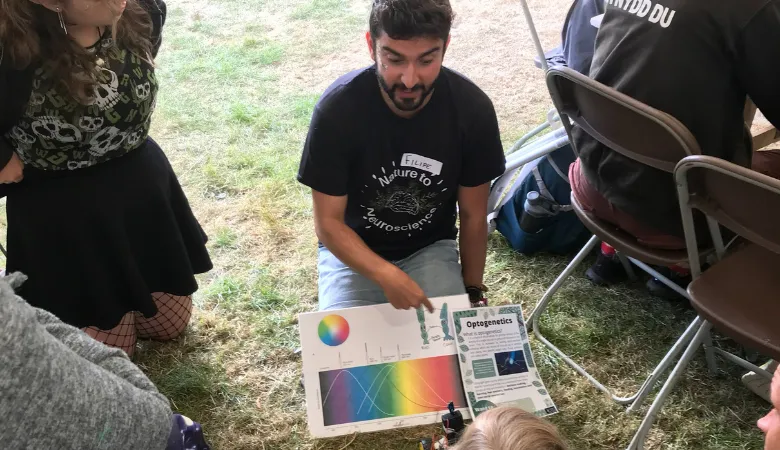
The CDN team also released a play, “The Brave Little Neuron,” which focused on the lifespan of growing neurons and their interactions in the brain. This performance was part of a comprehensive research focus in the Department of Developmental Neurobiology. Characters in the play designed and scripted by the research team included “brave neurons” and “big bad microglia.”
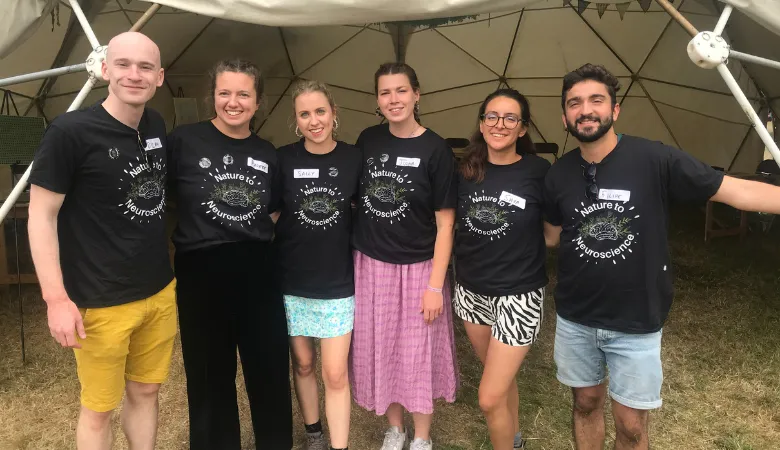
Green Man has been a great way to share our research! It’s a unique environment for public engagement and it’s been a lot of fun showing the public how good science can be. We loved building robots, playing games with audiences, and designing and performing our own plays. Can’t wait for next year!After our performance, a little girl came up to us and said she wanted to be a scientist when she grew up. – Phoebe Reynolds
What’s the loudest noise you can think of?
Researchers, including Natalie Milmoe and Olivia Dinwoodie of the Center for Craniofacial & Regenerative Biology, led the creation of a “giant eardrum.” They encouraged young children to write or draw answers to the question, “What is the loudest noise you can think of?”
The resulting collaborative work of science and art served as a starting point to get young people thinking about the anatomy of the ear, how it works, and how we hear sounds.
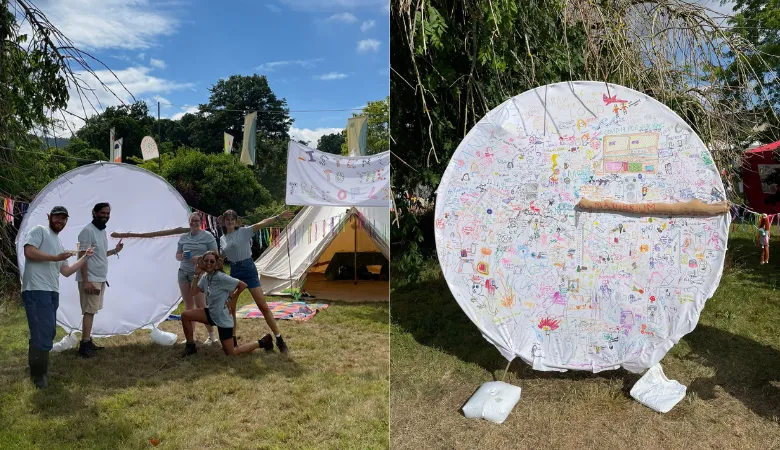
For an older audience, the team used 3D-printed auditory ossicles constructed via micro-CT scans to show how the bones of the middle ear work that allow people to hear, and explained how subtle morphological changes enable different ranges of sound perception. Comparative anatomy between species.

Our booth at Greenman focused on the middle ear and eardrum. All in all it was a great experience. We learned a lot and asked the question, “What’s the loudest sound you can think of?”I often got some funny answers back – many involving my sister! – Olivia Dinwoody
universe description
Benjamin Pethybridge of Theoretical Physics Group provides an entertaining and comprehensive survey of various aspects of modern physics theory and research.
His activities included demonstrating Einstein’s ideas about gravity, helping participants understand how black holes distort space-time, and understanding why dark energy helps explain the universe.
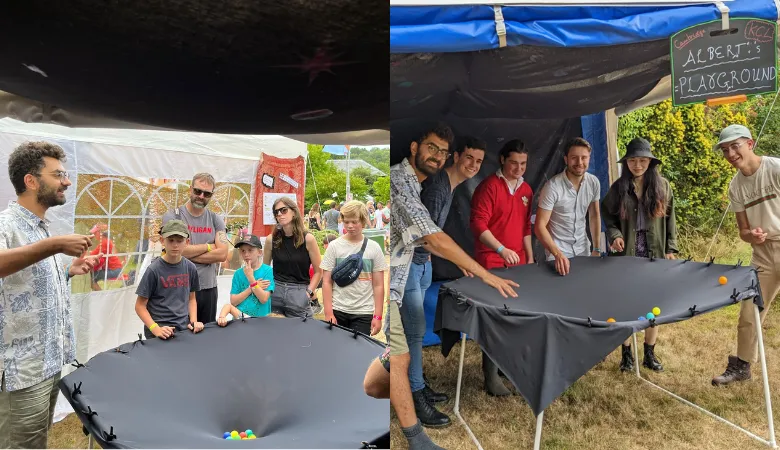
At our stall, we used a recent photo of the M87 black hole taken by the EHT collaboration to start a conversation about gravity and quantum mechanics.We set up demonstrations to help volunteers explain aspects of their research, then took participants back to the blackboard to explain how the pictures were taken and their significance to the physics community. had a great reception and all the volunteers enjoyed reaching out and discussing physics throughout the festival. I did. – Ben Pessybridge
weather forecast
The festival also saw the premiere of “Weather the Weather,” an immersive art installation by Dr. George Adamson, Senior Lecturer in Geography at Kings, and artist Inez Kamala Leretto. The project also included a technical team and volunteers from the Department of Geography and his JBT Institute at the Department, who gave their time to ensure a successful installation at Green Man.
The installation was originally developed in 2019/20 as part of King’s flagship artist-in-residence programme, King’s Artist.
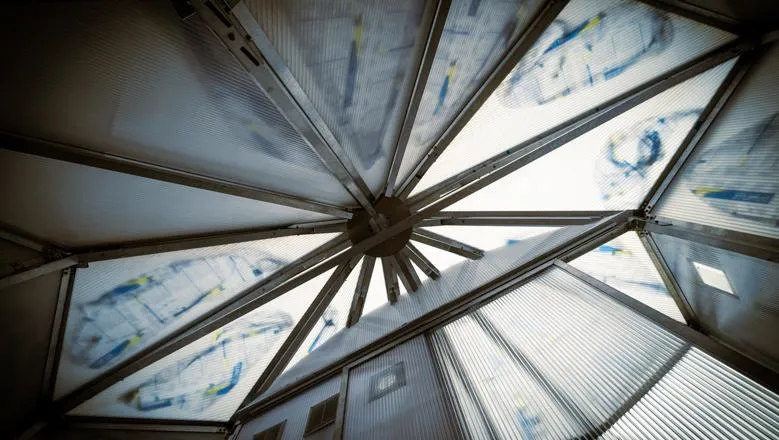
These activities are made possible by funding from the King’s Public Engagement Small Grant Scheme. Wellcome Trust Institutional Strategic Support Fund (ISSF) 204823/Z/16/Z; King’s Artist Program.













